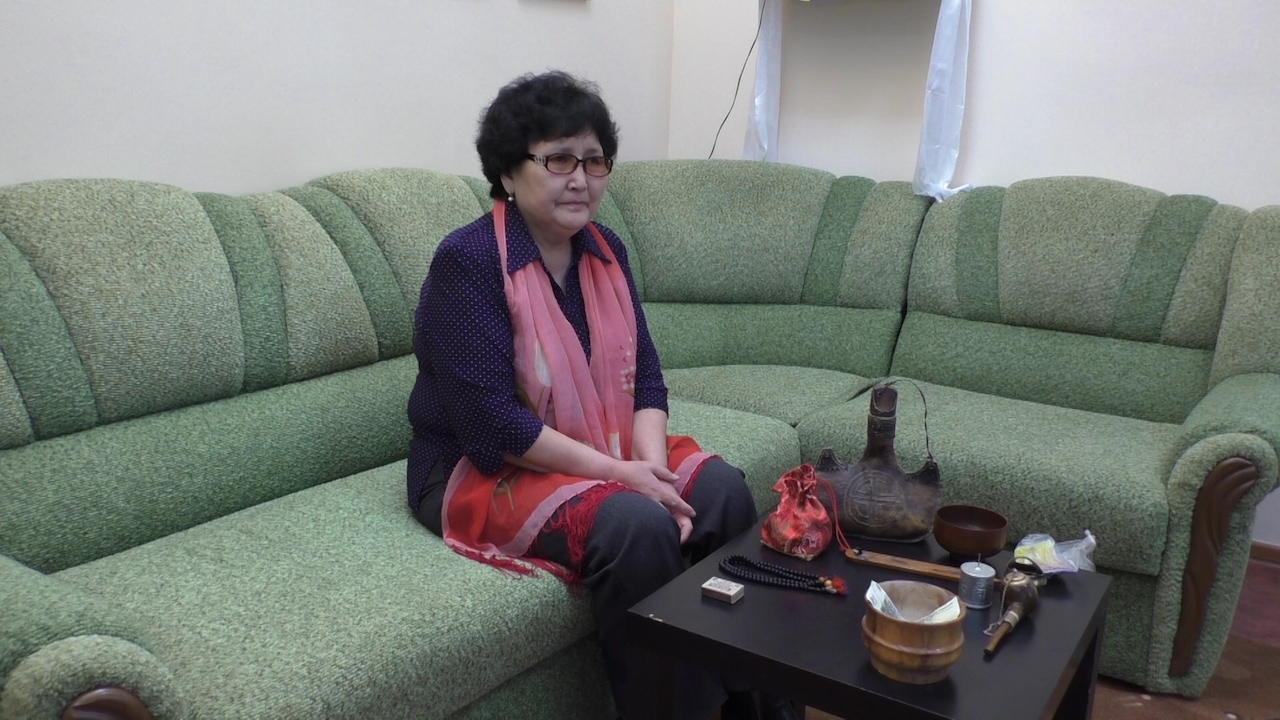Badma Amulakova, About the Felt Yurt
Duration: 11 mins 56 secs
Share this media item:
Embed this media item:
Embed this media item:
About this item

| Description: |
In this video Badma talks about the felt yurts that the Kalmyks have stopped using since the 1940s.
|
|---|
| Created: | 2017-01-02 12:31 |
|---|---|
| Collection: | Kalmyk Cultural Heritage Project (ARCHITECTURE) |
| Publisher: | University of Cambridge |
| Copyright: | University of Cambridge |
| Language: | xal (Kalmyk; Oirat) |
| Abstract: | In this video Badma talks about the felt yurts that the Kalmyks have stopped using since the 1940s.
The wooden carcass of the felt yurt consists of the following parts: term (wall), unin (roof poles), kharach (roof ring), tsagrg, uudn (door), and erg (door step). The wooden carcass is covered with felt, which consists of the following parts: deevr (roof cover), ork (cover for the roof ring), tuurg (wall cover), and irgvch (cover used for the lower part of the wall). Traditionally, the Kalmyk yurt is erected facing south. Its interior is divided into several areas. The right-hand side — as when one enters the yurt – is where the bed of the head of family (i.e. the father) stands. The father sleeps in this bed with his son(s). Underneath on the floor sleeps his wife with their daughter(s). The left-hand side of the yurt belongs to the parents of the husband. Like his son, the grandfather sleeps in a bed while his wife on the floor with grandchildren. The area of the yurt (opposite the door) is called khoomr. It is the most respectable area. Only guests or elders can be seated there. In the past, wealthy people had two chest sets (baran) on either side of their yurts, whereas the poor had only one. A baran usually consists of four pieces put on top of each other, including a small closet with doors, two chests, and a small table for offerings. The closet is used to store saddles, ropes, stirrups, etc., whereas the chest on top of it – for keeping clothes or food. The upper chest, which is smaller in size, is where precious items are stored, including jewellery, hats, etc. The table for offerings (teklin shire) is used to put images and statues of deities, as well as offerings (a cup with tea, candles) for these deities. Statues of different deities are wrapped in clothes of different colour. For example, Maitreya has a reddish-brown gown, White Tara – a white gown, Green Tara – a green robe, etc. Other items displayed or put on the table of offerings are a purse (ketch) to keep prayer beads and incense, a small revolving prayer drum (kurd) which contains mantras, as well as various offerings to gods (coins, cloth) and a boat-shaped vessel for incense. |
|---|---|
Available Formats
| Format | Quality | Bitrate | Size | |||
|---|---|---|---|---|---|---|
| MPEG-4 Video | 640x360 | 1.94 Mbits/sec | 173.65 MB | View | Download | |
| WebM | 640x360 | 1.71 Mbits/sec | 154.08 MB | View | Download | |
| iPod Video | 160x120 | 306.22 kbits/sec | 26.77 MB | View | Download | |
| MP3 | 44100 Hz | 249.76 kbits/sec | 21.86 MB | Listen | Download | |
| Auto * | (Allows browser to choose a format it supports) | |||||

